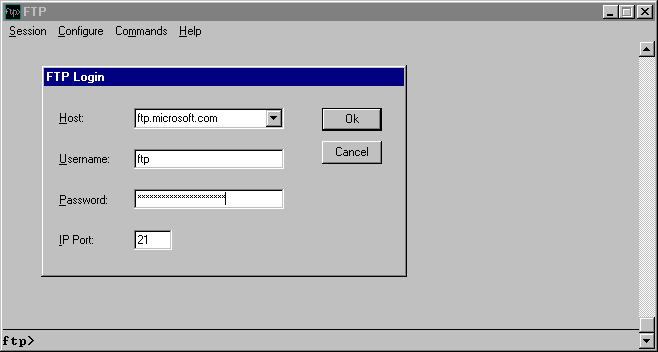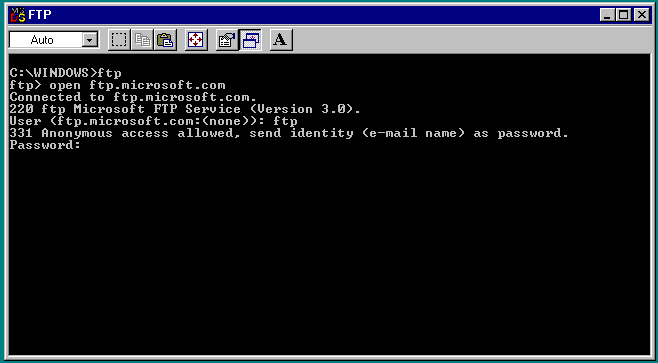
As we started to use computers in our work place, there was a need for people to have access to information that was stored on our computers. For a long time, people used "sneaker" net to move one file from one computer to another. "Sneaker" net is one person copying a file onto a floppy disk and walking it over to the person who needs it. For years, this was the primary method of moving information between computers. We have all gone to the movies and seen our hero running through the computer center after the villain. The camera shows row after row of tape drives moving in the background as they fight it out. The business world lived for the longest time on these massive tape systems. They would have to mail their tapes to other organizations that needed their information. Well back in the early days, Internet users felt that there had to be a better way. They realized that the hardest part was done: they were already "networked" together. The next logical application to develop was a method of copying files from one site to another. File Transfer Protocol (FTP) was invented.
Users of the Internet are applying the FTP protocol all the time. Each time you click a link on a web page, you request the remote computer to copy the next page on to your browser. This is a simple file transfer. The web server and your browser are designed to make the transfer simple and fast.
An FTP utility will let you log into a remote server and copy the file you need. In opening a session on a remote server, you will need to know the following:
In FTP terminology, you will need to open a "connection" with the remote server. Using the name of the server or its IP address, the server will prompt you to enter the account name. Most sites on the Internet use the default account names FTP and Anonymous. Last, the password will be needed. The default password is your E-Mail address. This address will be stored in a log file to show who has accessing their systems through the Internet.
I will show you two methods of using a Windows and DOS FTP utility. In the Windows environment, you will have to fill in three fields to log onto the FTP server. Upon clicking "Ok", the application will send the information to the server to attempt to gain access.

If you are using the Windows 95ä version of the FTP utility, the format is as follows:
